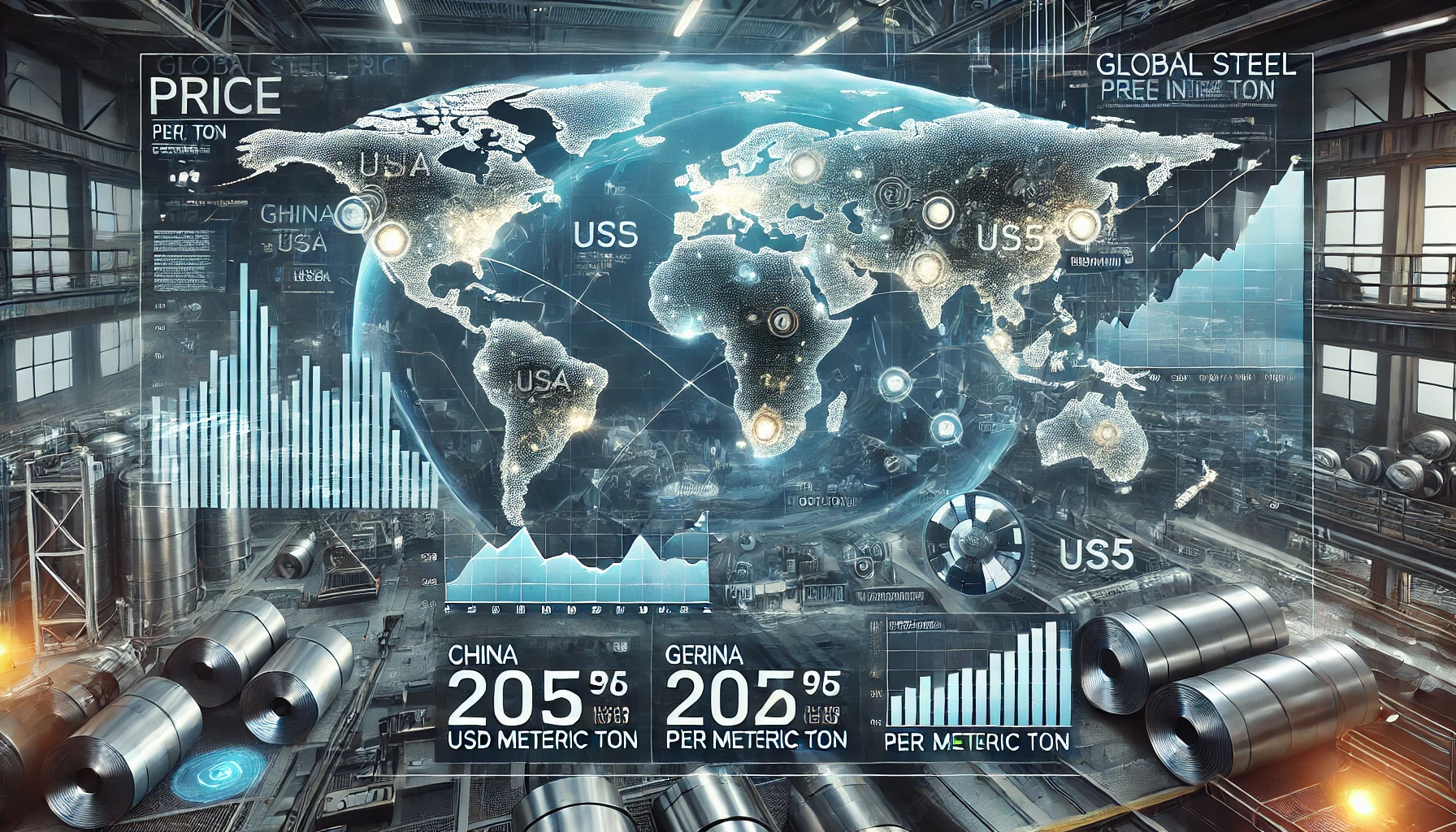
Introduction
The steel industry is constantly evolving, making it crucial for businesses to stay updated on pricing trends. Whether you’re a steel fabricator, contractor, or designer, understanding global steel price fluctuations can help you make informed decisions, optimize costs, and maintain a competitive edge.
In this comprehensive guide, we break down real-time global steel pricing trends, regional comparisons, and factors influencing market shifts. Let’s dive into the latest insights as of January 2025.
Global Steel Pricing Overview (January 2025)
Steel pricing is influenced by multiple factors, including demand fluctuations, geopolitical events, supply chain dynamics, and regulatory policies. Here’s a snapshot of current global steel prices:
| Country | Flat Steel Price (USD/MT) | HRB Price (USD/tonne) |
|---|---|---|
| China | 1,858 | 448 |
| Germany | 3,125 | N/A |
| USA | 3,479 | 839 |
| World Export | N/A | 486 |
Why Steel Pricing Trends Matter
Steel is the backbone of industries such as construction, manufacturing, and infrastructure. A small price fluctuation can significantly impact project costs and profitability. Understanding steel pricing helps in:
- Budget Planning: Optimize procurement and production costs.
- Strategic Buying: Purchase at the right time to maximize cost savings.
- Market Forecasting: Predict future trends and mitigate risks.
- Global Competitiveness: Stay ahead in an ever-changing market.
Current Global Steel Pricing Trends
1. Asia
Market Insights:
- India’s steel market remains stable due to a balanced supply-demand equation.
- China, on the other hand, is facing weaker global demand and export constraints, leading to price fluctuations.
Pricing Trends:
- China’s flat steel price: 1,858 USD/MT (as of January 2025).
- HRB Price in China: 448 USD/tonne.
2. Europe
Market Insights:
- The European steel market faced a downturn in late 2023 due to geopolitical tensions and reduced industrial activity.
- Lower demand from construction and automotive sectors has slowed price growth.
Pricing Trends:
- Germany’s flat steel price: 3,125 USD/MT (as of January 2025).
3. North America
Market Insights:
- The US steel market saw a peak in Q2 2024, with the Hot-Rolled Coil Index hitting 1,500 USD/st.
- By late 2023, steel prices reflected fluctuations driven by domestic consumption and inventory adjustments.
Pricing Trends:
- US flat steel price: 3,479 USD/MT (as of January 2025).
- HRB Price in the US: 839 USD/tonne.
4. Global Benchmarks
- World Export HRB Price: 486 USD/tonne.
- US HRB Price: 839 USD/tonne.
- China HRB Price: 448 USD/tonne.
Key Factors Influencing Steel Prices in 2025
Understanding the forces behind price fluctuations helps businesses make informed decisions. Here are the primary factors affecting steel pricing:
1. Supply and Demand Dynamics
- Production cuts or surpluses directly impact pricing.
- Economic slowdowns reduce demand, while infrastructure booms drive up prices.
2. Geopolitical Tensions
- Trade policies, tariffs, and sanctions can alter the cost structure.
- Political instability affects supply chains and steel exports.
3. Economic Conditions
- A strong global economy fuels demand, leading to price increases.
- Recessions or inflationary pressures can suppress pricing growth.
4. Regulatory Changes
- New environmental and emissions regulations affect steel production costs.
- Import-export policies influence regional pricing disparities.
Future Outlook for Steel Pricing in 2025
Analysts predict continued price volatility in the global steel market. The following factors are expected to shape steel prices in 2025:
- Economic Recovery: Post-pandemic growth and infrastructure projects may drive demand.
- Supply Chain Adjustments: Shifts due to geopolitical events and trade policies.
- Environmental Regulations: Stricter emissions laws may increase production costs.
- Raw Material Costs: Fluctuations in iron ore and coking coal prices will impact steel pricing.
Predictions:
- Asia’s steel market is likely to remain steady, with minor price fluctuations.
- European prices may see slow recovery if industrial activity picks up.
- The US market could stabilize after a period of high volatility.
Conclusion
Steel pricing is a complex but crucial element for industry professionals. Staying informed on global trends can help businesses optimize purchasing strategies, manage budgets effectively, and navigate market uncertainties.
With this Ultimate Guide to Global Steel Pricing Trends (January 2025), you now have real-time insights to stay ahead of market fluctuations. Monitor trends, adapt to changes, and make smarter procurement decisions to remain competitive in this dynamic industry.
Stay Updated. Stay Ahead.
Learn about Custom Concrete Mixing Solutions for Every Construction Need